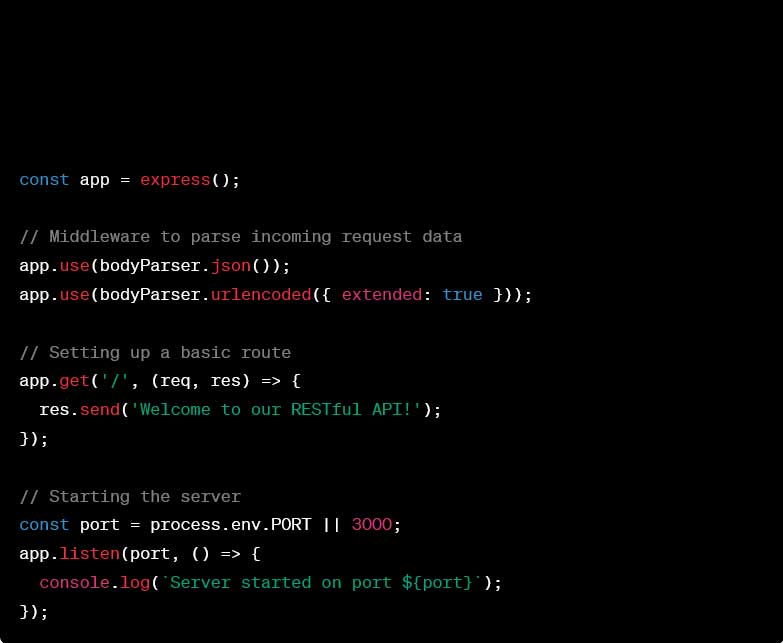RESTful APIs, in particular, have gained tremendous popularity due to their simplicity and ability to work seamlessly with various client-side applications. In this tutorial, we will walk through the steps to build a RESTful API using Node.js and Express, one of the most popular frameworks for creating web applications in Node.js. This knowledge is crucial for anyone interested in how to become a junior developer: a beginners guide.
PREREQUISITES
Before we begin, make sure you have the following installed on your machine:
- Node.js – You can download and install Node.js from the official website (https://nodejs.org/).
- A code editor – You can use any code editor of your choice. Visual Studio Code is a popular choice among developers.
SETTING UP THE PROJECT
Let’s start by setting up a new Node.js project. Open your terminal or command prompt and follow these steps:
Create a new project folder:

Initialize a new Node.js project

Install the required dependencies

CREATING THE EXPRESS SERVER
Now that we have set up the project and installed the necessary packages, let’s create the server file. Create a file named server.js in the root of your project folder.
In server.js, import Express and set up a basic server:

CREATING ROUTES
In a RESTful API, routes define the endpoints that clients can access to perform specific actions. Let’s create routes for basic CRUD operations (Create, Read, Update, Delete).
In this example, we will create a simple API for managing a list of users.
// Sample data (for demonstration purposes)
let users = [
{ id: 1, name: ‘John Doe’, email: ‘john@example.com’ },
{ id: 2, name: ‘Jane Smith’, email: ‘jane@example.com’ }
];
// GET all users
app.get(‘/users’, (req, res) => {
res.json(users);
});
// GET a specific user by ID
app.get(‘/users/:id’, (req, res) => {
const id = parseInt(req.params.id);
const user = users.find(user => user.id === id);
if (user) {
res.json(user);
} else {
res.status(404).json({ message: ‘User not found’ });
}
});
// POST a new user
app.post(‘/users’, (req, res) => {
const newUser = req.body;
users.push(newUser);
res.status(201).json(newUser);
});
// PUT (update) an existing user
app.put(‘/users/:id’, (req, res) => {
const id = parseInt(req.params.id);
const updatedUser = req.body;
users = users.map(user => (user.id === id ? { …user, …updatedUser } : user));
res.json(updatedUser);
});
// DELETE a user
app.delete(‘/users/:id’, (req, res) => {
const id = parseInt(req.params.id);
users = users.filter(user => user.id !== id);
res.json({ message: ‘User deleted successfully’ });
});
TESTING THE API
To test the API, run the server using the following command:

Your API will now be running on http://localhost:3000/.
Using tools like Postman or cURL, you can send HTTP requests to the API endpoints you created (e.g., GET, POST, PUT, DELETE) and observe the responses.
CONGRATULATIONS! YOU’VE SUCCESSFULLY BUILT A RESTFUL API USING NODE.JS AND EXPRESS.
You now have a solid foundation for creating more complex APIs and integrating them into your web applications.
Remember that this example is a simplified version, and in real-world scenarios, you’ll likely need to include more error handling, authentication, and database integration to make your API more robust and secure.
Happy coding! 🚀








